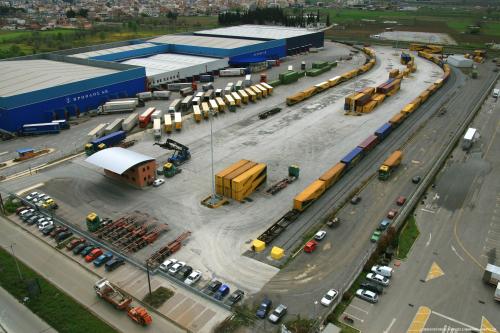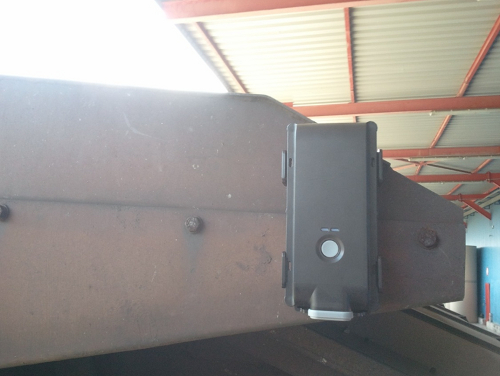
Project News
STRAIGHTSOL Newsletter - Issue 6 available (pdf, 688Kb)
[More]
See our animations
[More]
New deliverables available
[More]
Summary results booklet available
[More]
STRAIGHTSOL evaluation framework resources available
[More]
Open ENLoCC event videos available
[More]
STRAIGHTSOL Newsletter - Issue 5 available (pdf, 193Kb)
[More]
Kuehne-Nagel's video: Rail tracking and warehouse management (6:50 mins)
[More]
Demonstration poster presentations available to download
[More]
Demonstration D: Kuehne+Nagel - Rail tracking and warehouse management
- Go to our workshop report page
- See our results
- Publications and presentations:
- Market uptake of ICT usage for enhanced visibility on supply chain (Papoutsis, Gogas and Nathanail), European Transport Conference 2013, 30 Sep-2 Oct, Frankfurt, Germany. Access this document
- Integrated cargo tracking and warehouse management system (Nathanail and Gogas), 25th ARRB Conference, Perth, Australia (http://wired.ivvy.com/event/6NRYP8)
- Urban distribution concepts: a SWOT analysis on best practices of urban logistics solutions, 2nd International Conference on Supply Chains (Papoutsis, Gogas and Nathanail), Katerini, Greece (www.logistics.teithe.gr/icsc2012/eng/index_eng.htm)
Rail operations of Kuehne+Nagel S.A. (K+N) include the transfer of goods from Central European countries, through the Balkan area to Greece. In the context of this demonstration, the goods were transported by rail from Sopron, Hungary to K+N's terminal, a logistics centre owned by K+N in the industrial area of Thessaloniki (Sindos), where the transported cargo was:
- transshipped via its cross-docking area to trucks in order for the last mile distribution to be elaborated through the K+N's hub system
- stored in the terminal's warehouses short / mid-term in order to be forwarded later on to the final customer.
The demonstration took place in the Thessaloniki Greater Area (including city centre and interurban area) and K+N's terminal and warehouse facilities in Sindos, 30km from Thessaloniki. The demonstration area was approximately 1,500 km2 including the area where the last-mile operations of K+N and its customers took place.

Kuehne+Nagel warehouse
Warehousing and last-mile distribution activities depend on the performance of international rail freight transportation in terms of time reliability. Better information sharing on cargo location contributes to improved preparation processes of warehousing and more accurate planning of urban logistics.
Information on cargo location was previously provided manually, after on-site recording of cargo status by local rail operator's personnel. Information capturing and sharing using conventional means can lead to some erroneous information, directly affecting waiting times of trucks and the planning of the next legs (e.g. last mile distribution). It also has an adverse impact on terminal activities (warehouse management, cargo handling etc.). These gaps in the interconnection of the two successive transportation legs resulted in the creation of a huge administrative burden, with excess costs depreciating the company's image as a logistics service provider. According to K+N statistics, previously 27% of wagons were delayed for more than one day for various reasons, with 11.5% of these being removed (cut-off) from the train. The demonstration aimed to ameliorate these problems through tracking of rail wagons and cargo.
GPS-enabled devices were mounted onto rail wagons used by K+N for transporting goods and real-time information was provided to the warehouse management system on cargo location, assisting in the identification of delays, cut-off wagons, unexpected events, etc. In case of such unexpected incidents, notification alerts were sent to K+N and they, in turn, directly updated their customers or other involved stakeholders on expected time delays of the goods ordered.

GPS device on wagon
Based on the customer's demand and interest, during the first period of demonstration tests, six GPS devices were purchased and enabled the monitoring of 24 wagons per month (3% of the total). Preliminary results were highly encouraging and were close to maximum estimates: the total cost savings for K+N reached 1500€/month, while the reduction in truck kms was estimated to be 1200 km/month, equating to CO2 emissions savings of around 1kg/month. Those figures are indicative of considerable environmental benefits, as well as cost and energy savings when the demonstration is applied in a larger scale, including the monitoring of all the rail freight wagons at regional, national or international level, according to the demonstration's roll out scenario.
K+N's intention is to gradually increase the number of GPS monitoring devices and apply the concept of the demonstration at a larger scale, while the railway operators have also expressed interest in tracking rail wagons as an added value service to their operations, especially in cases when the high value of the transported cargo justifies the continuous use of tracking and tracing throughout the whole trip.
The stakeholders involved in the demonstration included:
- K+N, as logistics service provider.
- Customers of K+N (shippers or shipping companies and receivers of goods).
- Rail authorities, as infrastructure and equipment provider.
- Truck operators, as partners of K+N implementing the task of last mile distribution.
- Public, as final receivers, as consumers of the transported goods and also being externally impacted by the concept running.

Events
29/08/2014
Project Final Review meeting, Brussels
12/06/2014
Smart Urban Freight Conference hosted by NewRail, Newcastle University, including contributions from Straightsol project
[Conference webpage]
13/06/2014
Evaluation Framework Training Sessions, Newcastle University
[More]
02/04/2014
Open ENLoCC event, Brussels, including presentation of Colruyt and Delhaize night-time deliveries demonstration
[More]
24/09/2013
Demonstration Results Workshop/Exhibition in Amsterdam
[More]
02/07/2013
TNT Express demonstration workshop in Brussels
[More]
23/04/2013
Oxfam demonstration workshop in Batley, near Leeds, UK
[More]
07/03/2013
DHL Supply Chain demonstration workshop in L'Hospitalet de Llobregat/Barcelona, Spain
[More]
31/10/2012
Oslo: Demonstration workshop
Smart Urban Transport - Standardising information in retail supply chain management and last-mile distribution
[More]
13/09/2012
Thessaloniki: Demonstration workshop
"Intelligent" systems for the interconnection of urban-interurban freight transport
[More]
03/07/2012
Brussels: STRAIGHTSOL project workshop on Smart Urban Freight Solutions
(in collaboration with the Smartfusion partnership)
[More]